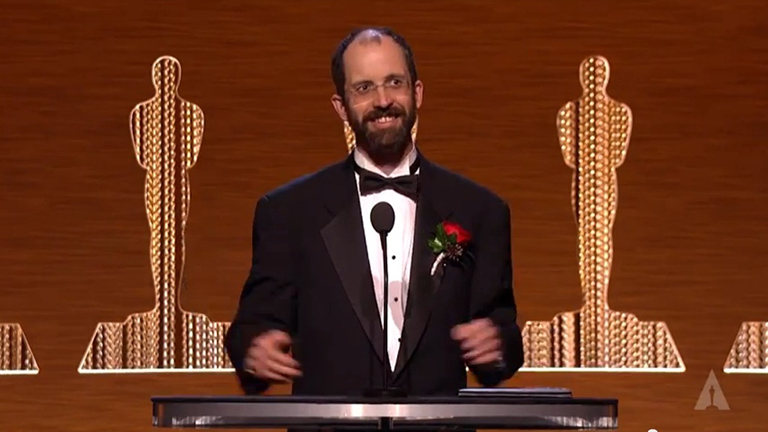A Calculated Drama
It’s quite the distance between UBC mathematics professor Robert Bridson’s home province of Newfoundland and Pandora, the lush (and hypothetical) moon in the Alpha Centauri star system made famous in the 2009 movie Avatar. Equally mysterious and far-reaching is the path to Middle-earth, as imagined in The Hobbit movie franchise (2012 and counting) or the eerily silent but gut-wrenchingly ‘real’ space in Gravity, the 2013 blockbuster.
However, it wasn’t luck, it was smarts – and Bridson’s amazing software – that helped create the incredible scenes in all three movies. At the 2015 Academy Awards, those skills won Bridson a Technical Achievement Oscar for these and other silver-screen jaw droppers and his work over the past 13 years.
Mathematicians and ‘movie magic’ might seem incongruous but in an industry now reliant on cost-effective yet ever bigger effects, it’s the behind-the-scenes math expertise that drives the increasingly more realistic computer-generated imaging.
“It has to look real,” said Bridson. “It has to behave real, and the best way to do some of those things is to go to the real laws of physics and math behind nature to simulate it.”
Read more about
Research ExcellenceRead more Research Excellence stories:
- Precious Matter
- Taking the spike out of diabetes
- The Pharma Is In
- Olympic Sized Reductions
- Solar Cells? Naturally
- Sustainable Stand, No Longer a Tall Order
- Fold, Spindle, Mutate
- Bita Imam, Student Extraordinaire
- Drilling for Medical Success
- Top Researchers Recognized: UBC’s Young Researchers Shine
- Oceans of Opportunity
- Charles Fipke: A Gem of a Friend and Philanthropist
- A Royal Welcome
- Julio Montaner: Shifting the Global Conversation on HIV/AIDS
- David Cheriton: Making Everything Compute
- Doubling Down on Gambling Research
- Julio Montaner, Olav Slaymaker, Honoured
- Jaymie Matthews Rocks On In Space
- Solar Cells? Naturally
- An Extrudingly Good Idea
Related Content

Campus
VancouverMathematicians and ‘movie magic’ might seem incongruous but it’s the behind-the-scenes math expertise that drives the increasingly more realistic computer-generated imaging.